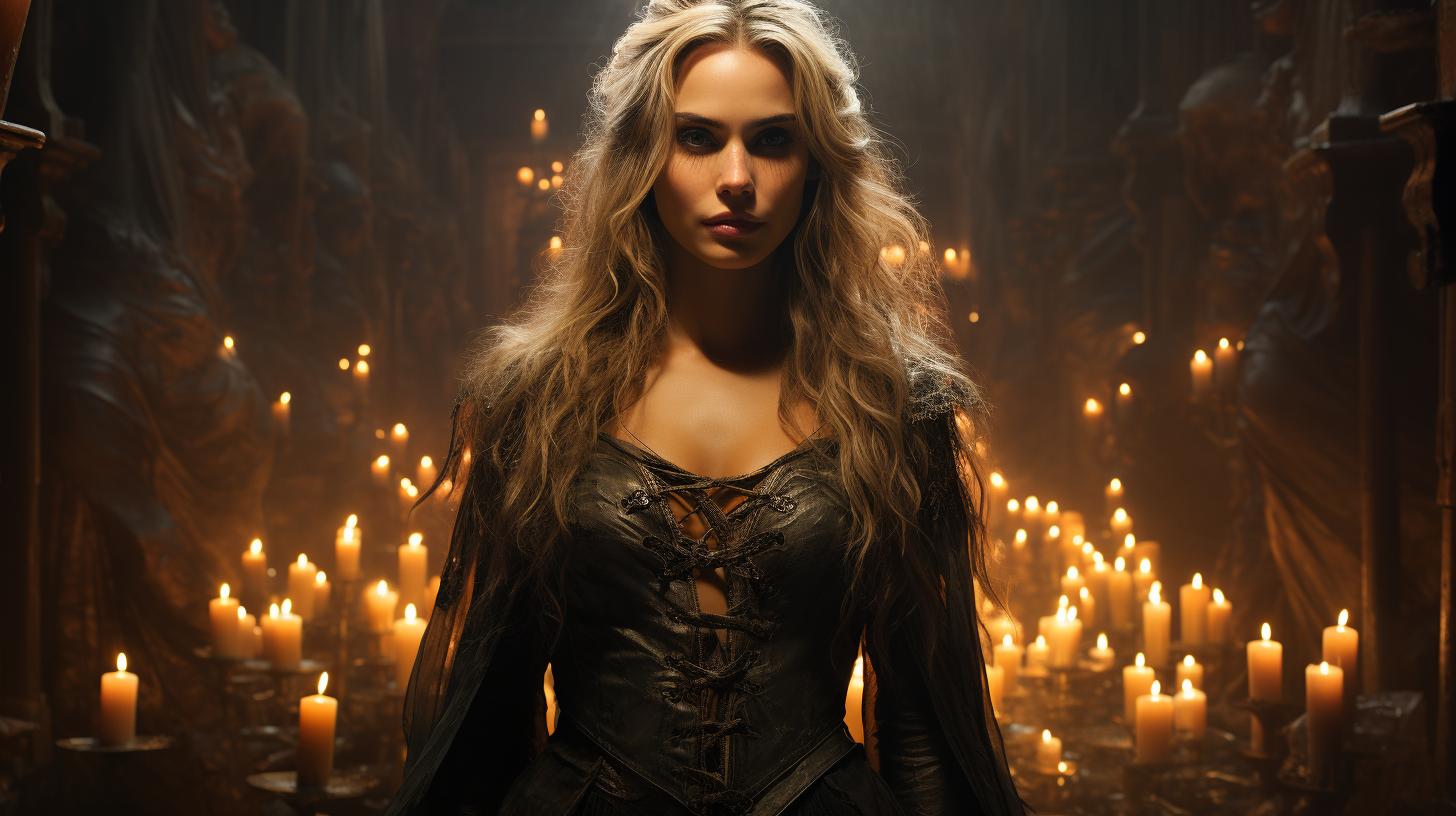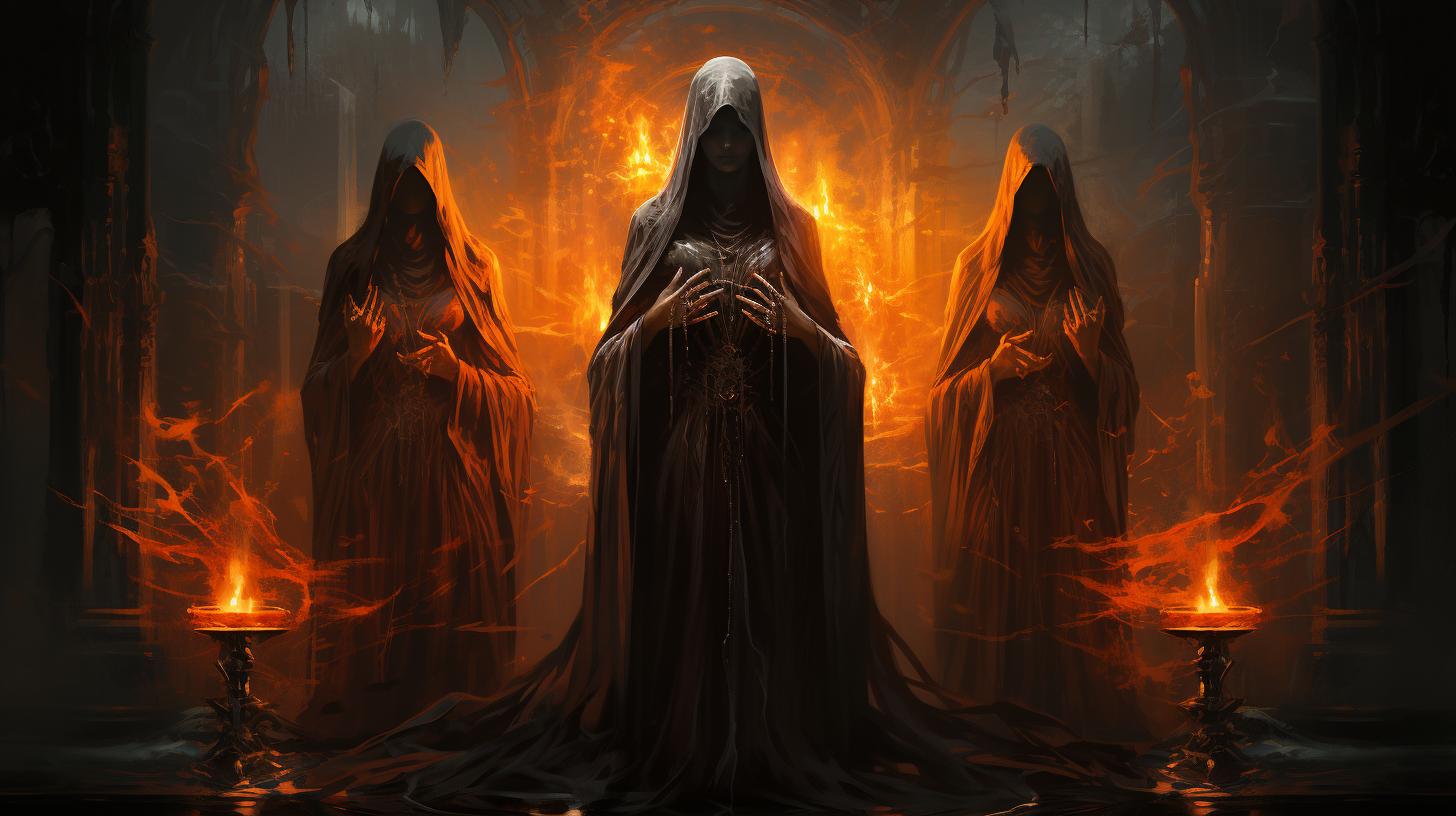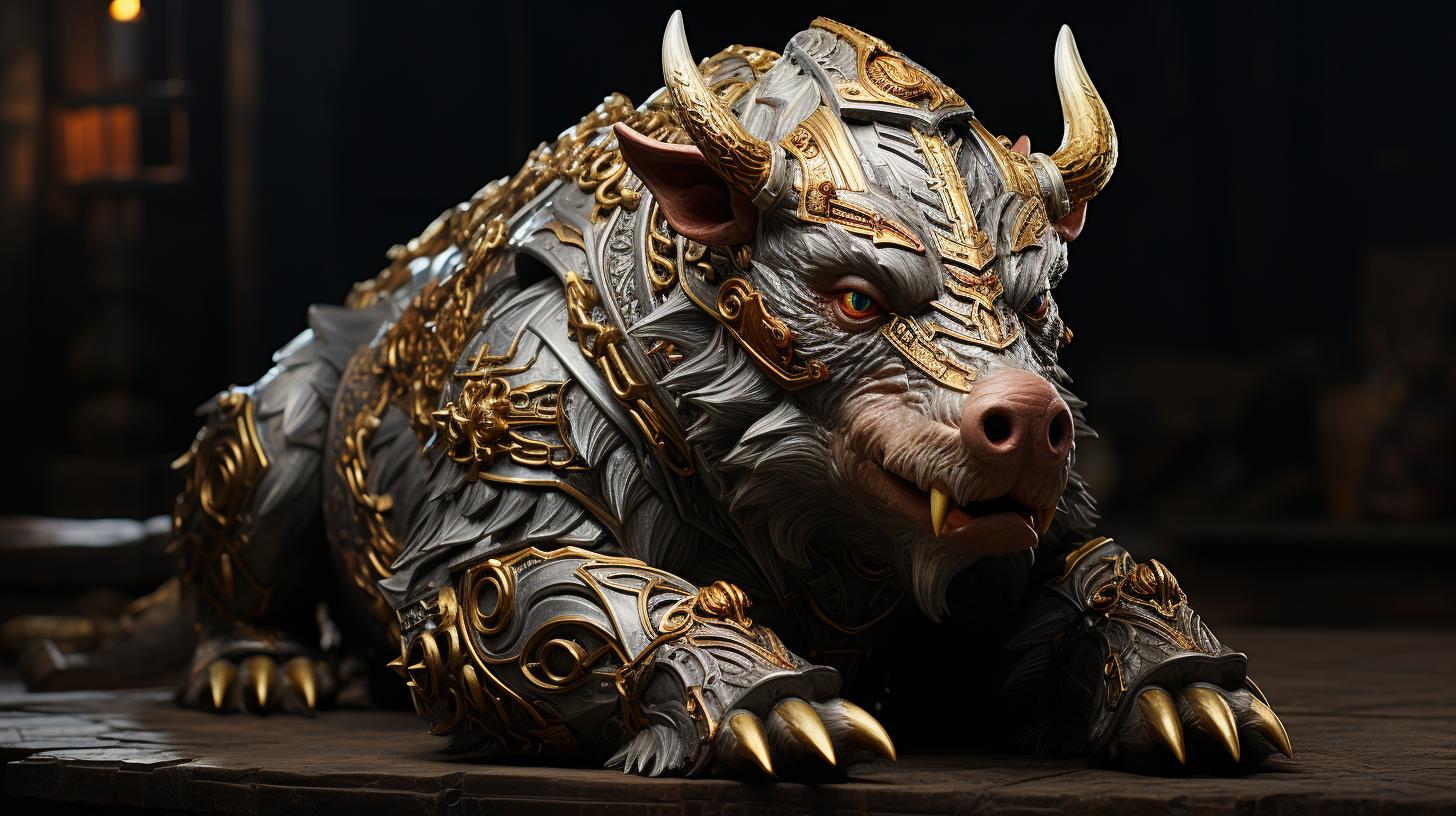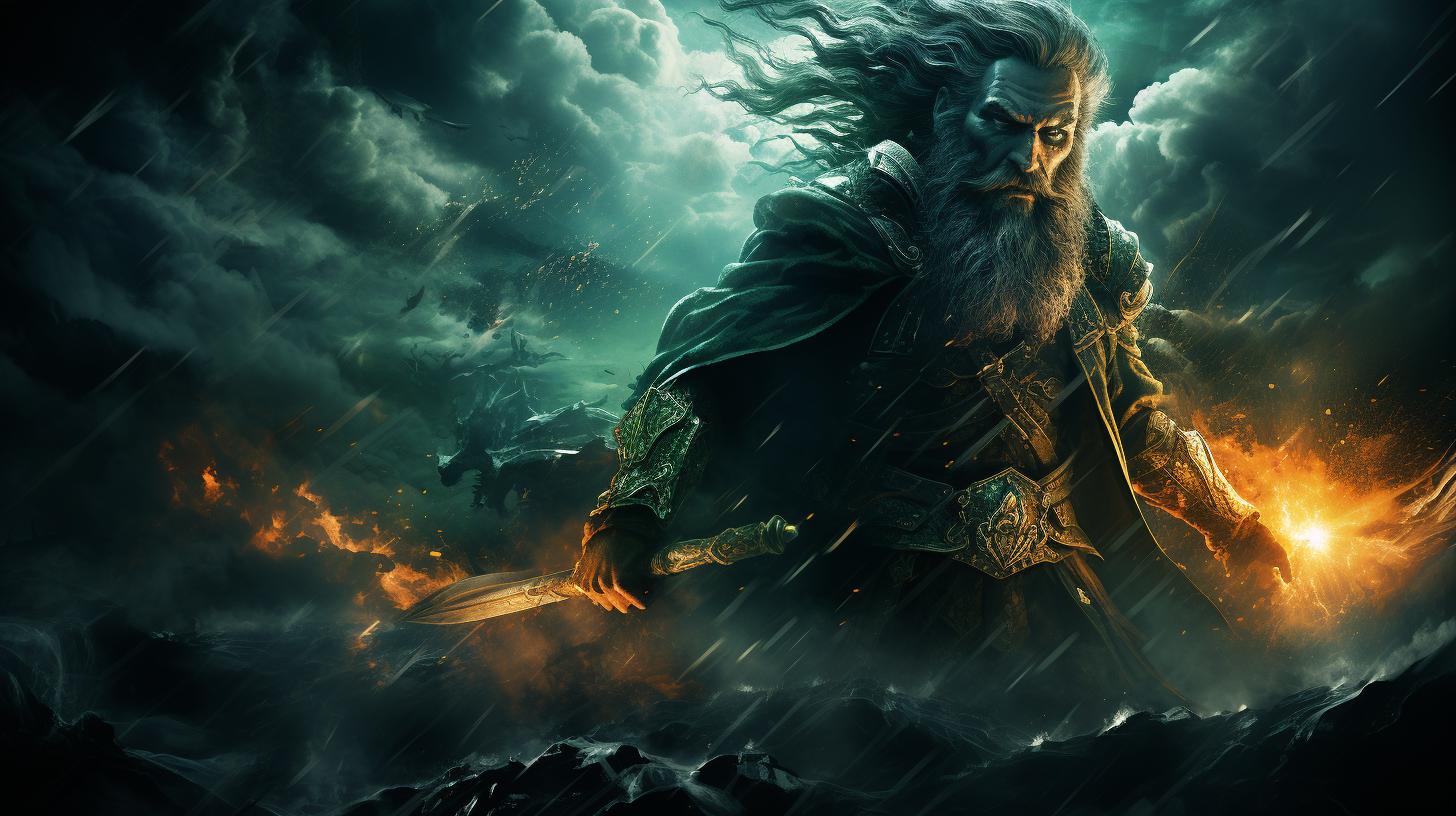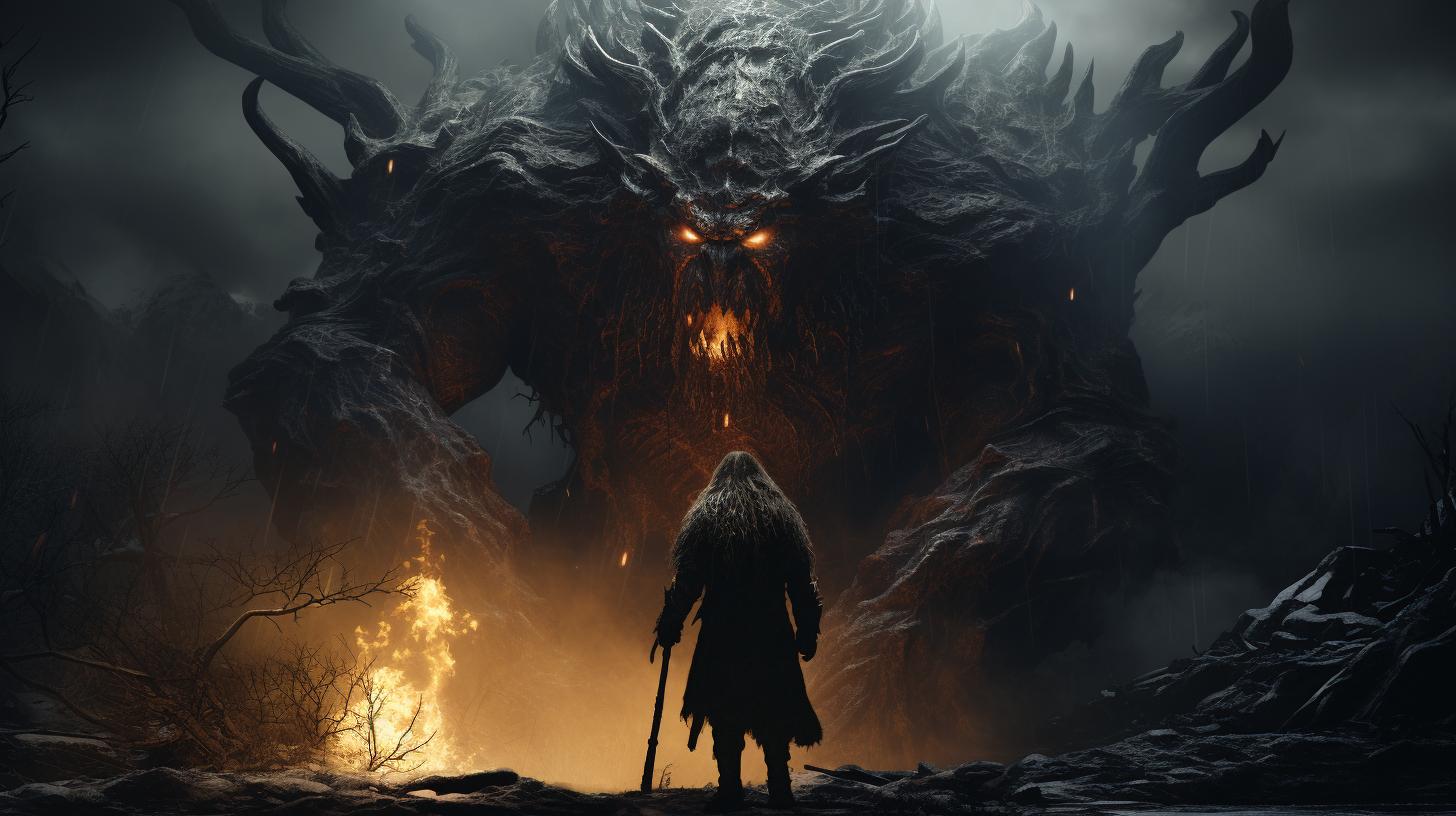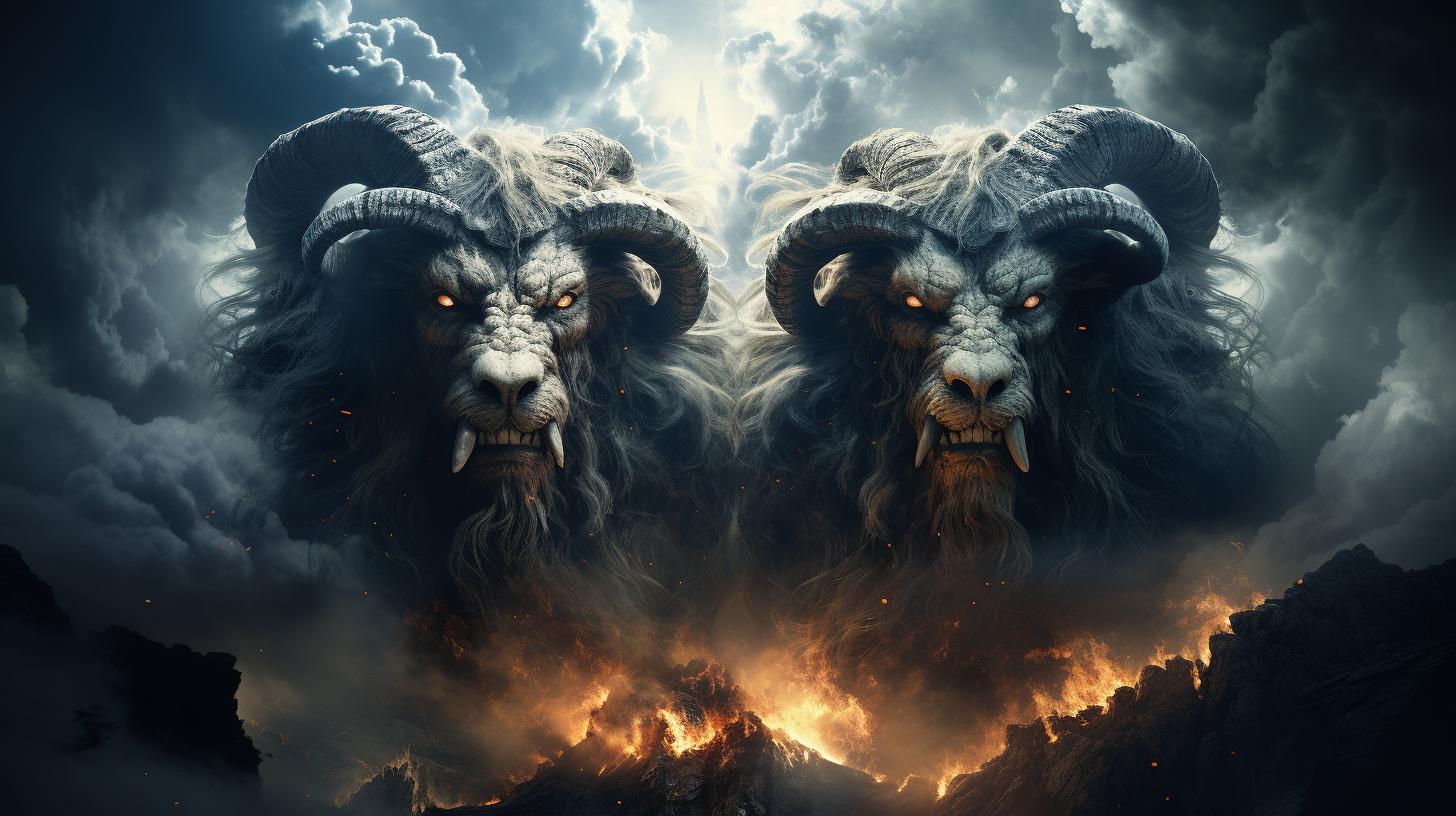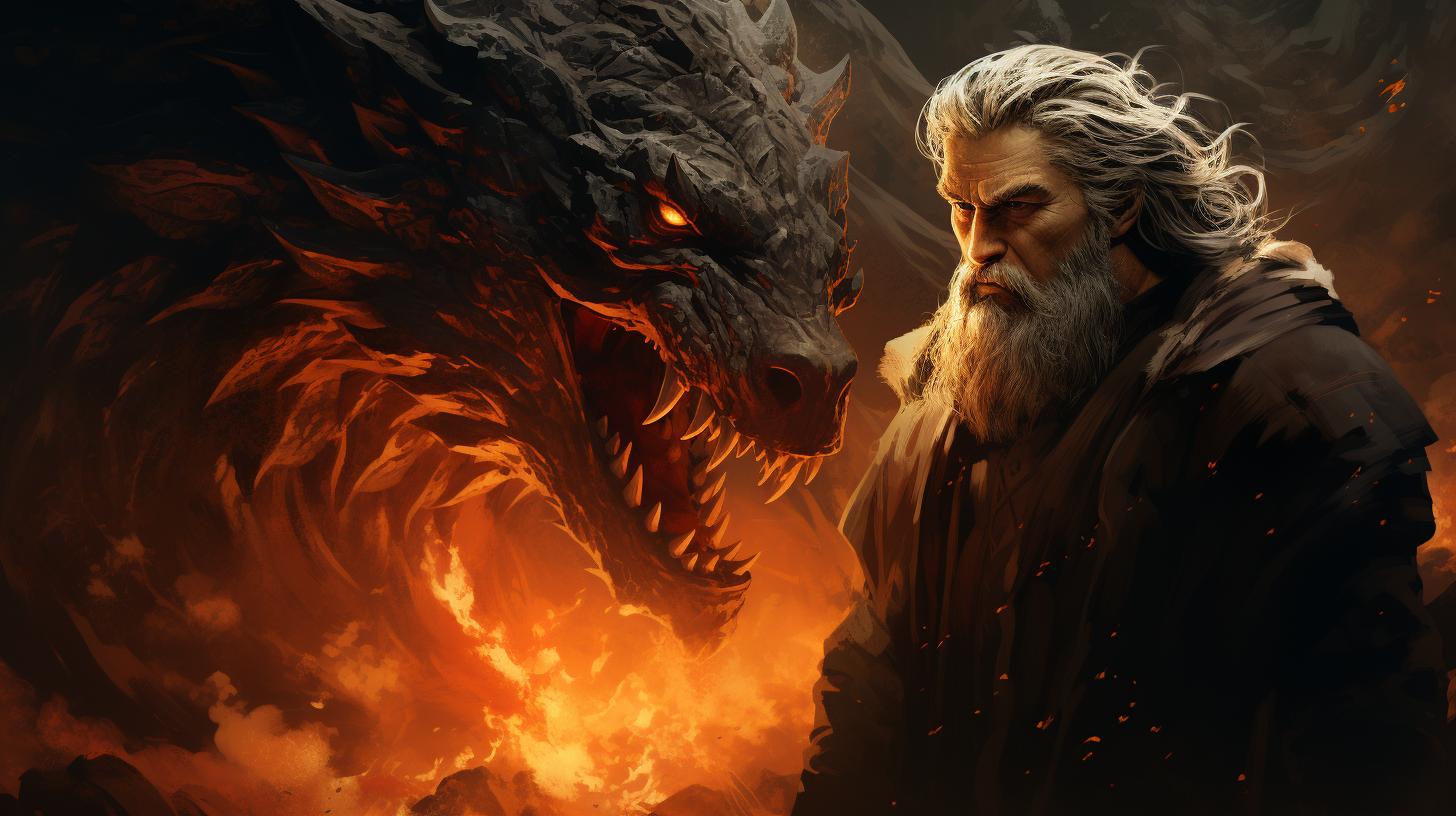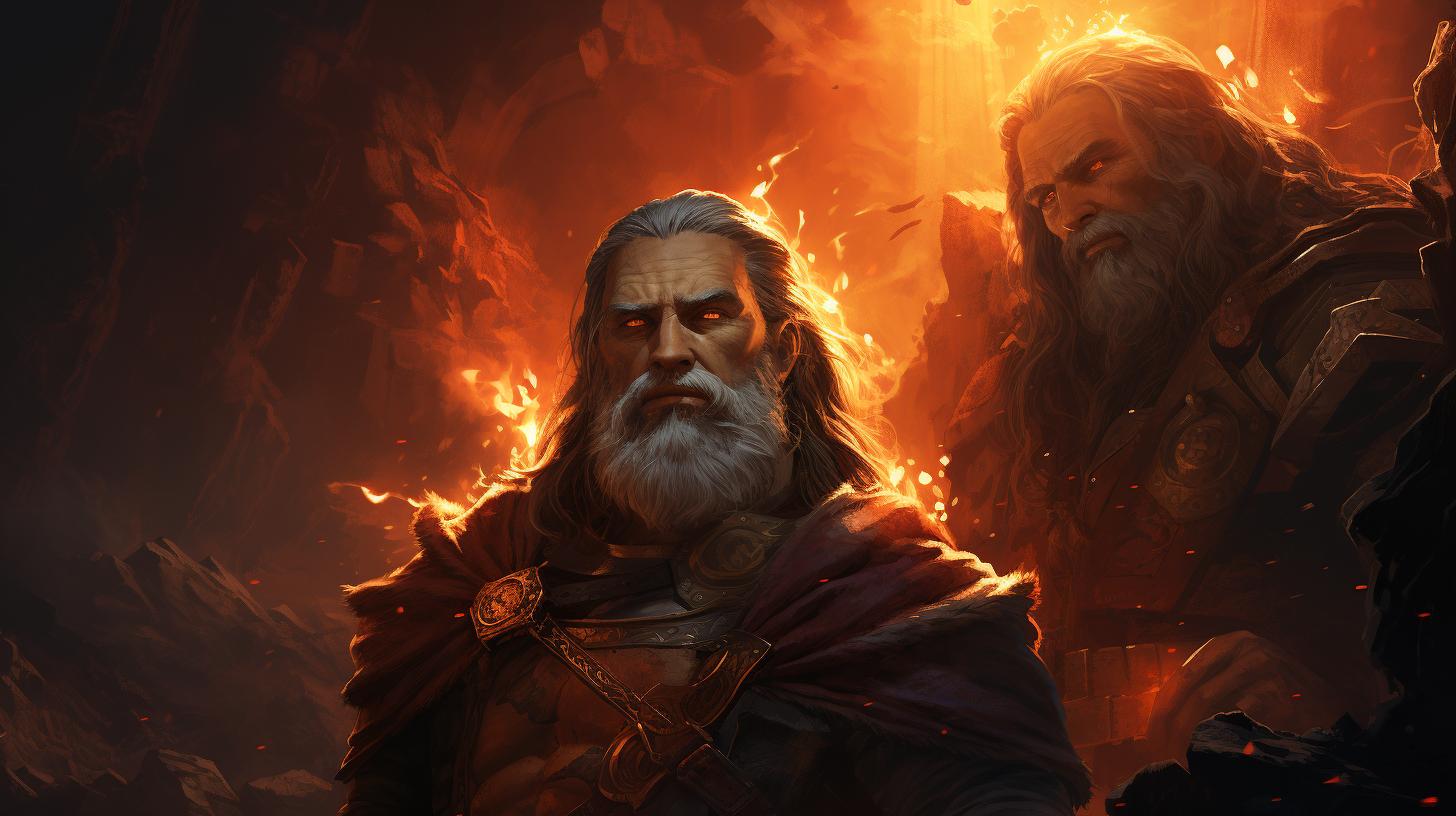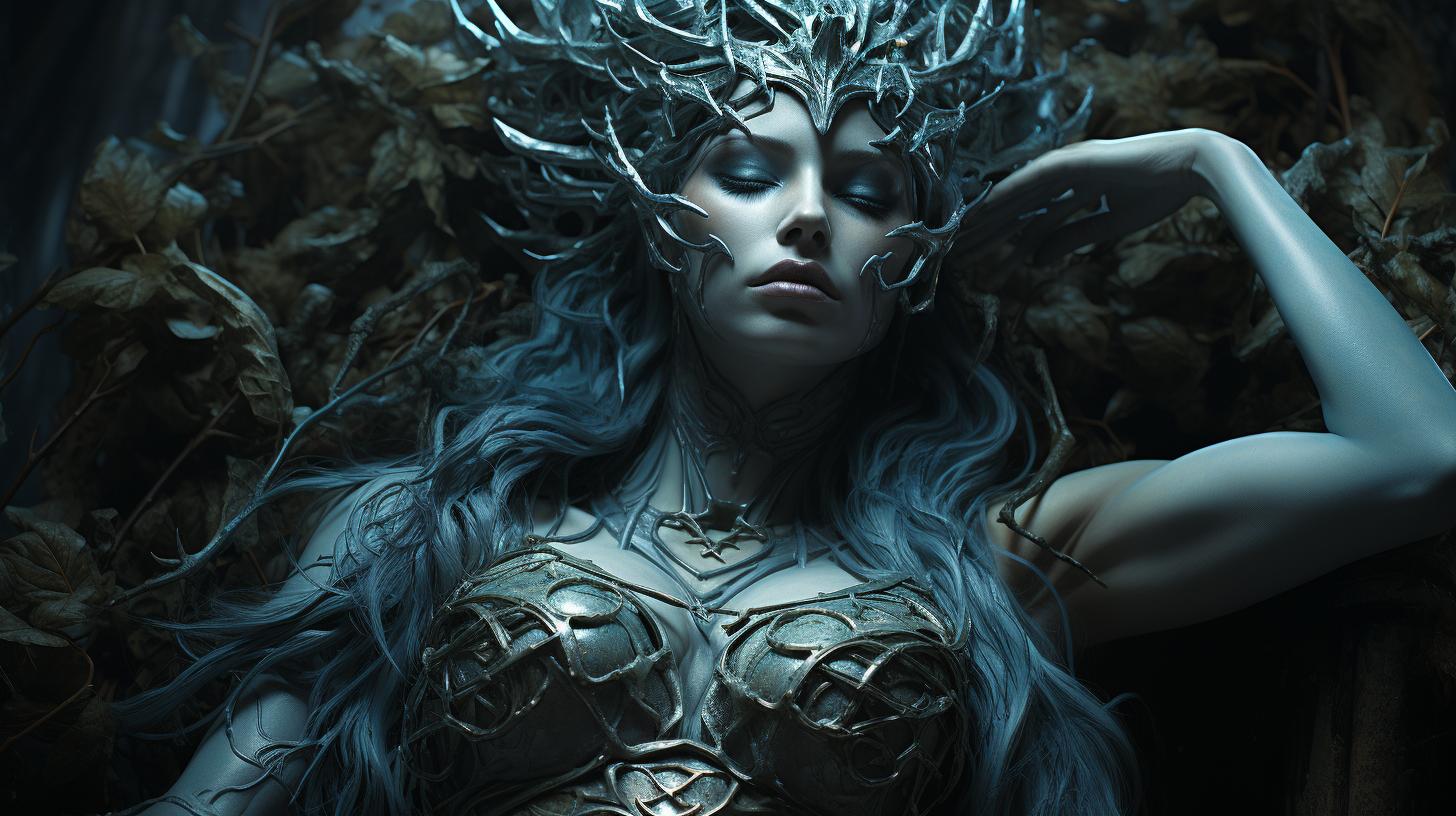Unveiling the Mysteries of Volva Norse Mythology: Insights into the Enigmatic Seers of Ancient Norse Culture
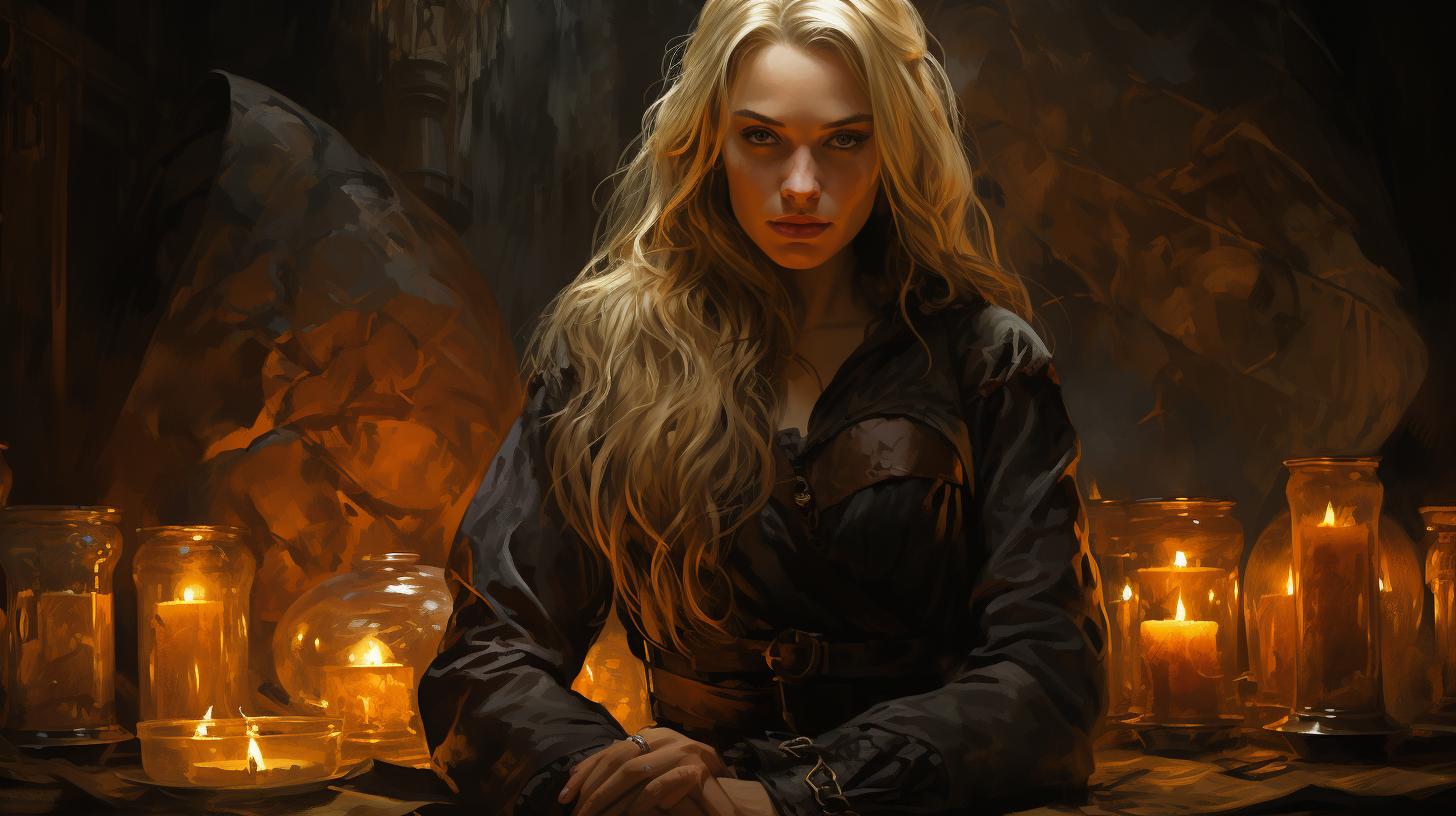
Volva Norse mythology is filled with mystique and intrigue. These revered seers held the power of future sight, gaining respect from royalty and bringing guidance to powerful leaders. Their colorful attire, adorned with animal skins and ornate staffs, brought an air of enchantment to their presence.
Through songs of Vardlokkur, they traveled between worlds, entering a trance-like state to deliver visions of the future. Their unique ability to transcend time and connect with forces beyond the gods set them apart, even drawing the attention of Odin himself.
This article explores the origins, powers, societal roles, and magical practices of the enigmatic Volva.
Origins of Volva Norse Mythology
The fascinating origins of Volva Norse mythology trace back to ancient Norse culture and belief systems. In this section, we will explore the respected seers known as Völva, the magical practice of Seiðr they mastered, and their association with prominent goddesses and the Vanir tribe.
Völva: Respected Seers of Norse Mythology
The Völva were highly esteemed figures in Norse mythology, revered for their mystical abilities to see into the future. These wise women of Seiðr had a controversial reputation even during the Viking age.
They were sought after by royalty and powerful chieftains to aid in making important decisions. The Völva were known for their distinctive attire adorned with colorful animal skins, ornate staffs, and bags containing divination talismans.
The Seiðr: Magical Practice of the Völva
The Seiðr, often associated with the Völva, was a powerful form of magic in Norse mythology. It was primarily practiced by women and considered a darker art compared to other magical practices.
Seiðr had the ability to shape destinies, even those of the gods, and transfer power from one individual to another. It combined elements of galdr, the use of songs and chants to manifest a mage’s will, and unique rituals performed by the Völva.
Association with Goddesses and Vanir
The Völva and their craft were closely linked to the goddesses of Norse mythology. The introduction of Seiðr in Asgard is accredited to Völva Heidr, who caused awe and fear among the gods.
Additionally, the goddess Freya, associated with the Vanir tribe, allegedly taught Odin the art of Seiðr. The war between the Aesir and Vanir, resulting in a hostage exchange, finds its roots in the practice of Seiðr.
The Powers and Skills of Völva
In Norse mythology, the Völva possessed extraordinary powers and abilities that made them revered and sought after. Let’s delve into the various aspects of their mystical prowess:
Future Sight and Prophecy
The Völva were renowned for their unique ability to glimpse into the future and provide prophetic insights.
Through their deep connection with the supernatural, they could perceive the unfolding of events and share their visions with those who sought guidance. Their prophecies were described as vivid memories, as if they were present at the moment of creation.
Trance and Otherworldly Travel
To access their prophetic abilities, the Völva entered into trances, transcending the earthly plane and journeying into other realms. In this altered state of consciousness, they communed with powerful forces and gained profound wisdom.
Their ability to traverse between worlds allowed them to tap into hidden knowledge and bring back visions of the past, present, and future.
Vardlokkur: Songs and Chants for Divination
The Völva employed a particular form of magic called Vardlokkur, which involved singing or chanting incantations. These melodic invocations enhanced their connection with the divine, enabling them to channel their prophetic abilities more effectively.
The enchanting nature of the Vardlokkur songs acted as a gateway to the spiritual realm, facilitating their journey into the depths of cosmic knowledge.
The powers and skills possessed by the Völva were awe-inspiring, granting them a status of great reverence and admiration within Viking society.
Their unique combination of future sight, trance-induced revelations, and divinatory songs made them indispensable guides for those who sought their wisdom.
Role of Völva in Viking Society
The Völva played a crucial role in Viking society, commanding respect and sought after by royalty and powerful leaders. Their unique abilities to see the future and provide guidance made them indispensable in decision-making processes.
Consulted by Royalty and Powerful Leaders
The Völva were highly esteemed by kings, queens, and influential chiefs who sought their counsel when faced with critical choices. Their prophetic visions and deep insights provided invaluable guidance for matters relating to war, politics, and personal destinies.
Colorful Attire and Iconic Accessories
The Völva were easily recognizable by their distinctive attire. They adorned themselves with vibrant garments made from various animal skins, showcasing their connection to nature and the supernatural. Additionally, they carried ornate staffs and bags filled with divinatory talismans, further enhancing their mystique and power.
Special Seat in Banquets: Reading the Fate of Present
At banquets and gatherings, the Völva held a special seat, symbolizing their elevated status in Viking society. As the feast progressed, they used their abilities to read the present fate of those in attendance.
Through their visions and wisdom, they provided insights into individual destinies, ensuring the recognition of the interconnectedness between past, present, and future.
Völva in Norse Witchcraft
Unveiling the practices of Völva in Norse witchcraft provides a fascinating insight into the unique combination of Galdr and Seiðr. This magical fusion represents the multifaceted nature of Völva’s powers and the duality of their craft.
Combination of Galdr and Seiðr
The Völva’s magical repertoire encompassed both Galdr and Seiðr, each with its distinct characteristics and purposes. Galdr, the art of chants and songs, allowed the Völva to manifest their will, create spells, and shape the outcomes of various endeavors.
On the other hand, Seiðr, regarded as a darker form of magic, held the ability to shape fate and even influence the gods themselves. Practiced mainly by women, this powerful craft enabled the Völva to manipulate the energy of individuals, transferring power from one person to another.
Powerful Galdr: Songs and Spells
The Völva were masterful in employing Galdr, using melodies and incantations to harness the forces of nature and bend them to their will. Through their enchanting songs, they could facilitate safe childbirth, bring victory or defeat in battles, and even call upon supernatural entities for aid.
These intricate spells were carefully crafted, utilizing specific rhythms and tones that resonated with the intended purpose. The Völva possessed not only a deep understanding of the power of language but also the ability to infuse their words with magic, creating a profound impact on the world around them.
Darker Path of Seiðr: Stealing and Shaping Fate
The practice of Seiðr, although influential, carried a shadowy reputation within Norse mythology. Völva who delved into this realm possessed the ability to peer into the web of fate and manipulate its delicate threads.
They had the audacity to impact the destiny of gods and mortals alike, an indication of their formidable power and knowledge.
Seiðr was not without its risks, as this darker magic involved stealing energy and transferring it to another.
By harnessing the energy of individuals, the Völva could reshape destinies and change the course of events. This unorthodox use of magic added an intriguing layer to the already mysterious practices of the Völva.
In conclusion, the Völva’s involvement in Norse witchcraft highlights their mastery of Galdr and Seiðr, allowing them to wield power over the spiritual realm and alter fate. Through their songs, spells, and manipulation of energy, they held the ability to shape destinies and influence even the most divine forces.
Volva Norse Mythology and the Gods
In Norse mythology, the Volva played a significant role in the interactions between mortals and deities. Their powers of prophecy and future sight made them sought after, even by the mighty gods themselves.
This section explores the intricate relationship between the Volva and the gods, including Odin’s relentless pursuit of their guidance, their connection with the Völva of Völuspá, and their crucial role in validating future events such as Ragnarok.
Odin’s Quest for Völva’s Guidance
Not even the Allfather, Odin, could resist the allure of the Volva’s mystical abilities. Despite being a master practitioner of Seiðr, Odin sought the counsel of the Volva, including the renowned Völva of Völuspá.
Odin’s relentless pursuit of their guidance was driven by his desire for validation and confirmation of his own prophetic visions, especially those pertaining to the cataclysmic event of Ragnarok. The Volva’s insight into the future provided crucial reassurance and insight to Odin as he navigated the complex web of fate.
Relationship with the Völva of Völuspá
Among the notable Volva in Norse mythology, the Völva of Völuspá holds a particularly significant role. She is the seeress responsible for recounting intricate details of the creation of the world, the gods and their cosmic struggles, and the impending doom of Ragnarok.
Her profound connection with the gods and her ability to perceive the future elevated her to a position of reverence and respect. The Völva of Völuspá serves as a bridge between the human realm and the divine, imparting wisdom and eternal knowledge through her prophecies.
Ragnarok: Völva’s Validation of Future Events
Ragnarok, the apocalyptic battle destined to reshape the world, held immense significance in Norse mythology. The Volva played a pivotal role in validating the foreseen events of Ragnarok. Through their connection to the divine realms and their powers of future sight, the Volva confirmed the impending doom and cataclysmic clashes that would occur during Ragnarok.
Their validation not only instilled fear and understanding among mortals but also guided the gods in preparing for the inevitable conflict that would shape the future of the cosmos.
Norse Witch Symbols and their Meanings
The Volva Norse mythology is rich with various symbols associated with their magical practices and beliefs.
These symbols hold deep significance and represent different aspects of Volva and Seiðr. Understanding their meanings helps unravel the mysterious world of Norse witchcraft.
Symbols Associated with Völva and Seiðr
Völva Staff
The Völva staff is a prominent symbol of the seer’s power and authority. It is often adorned with intricate carvings and represents the connection between the earthly realm and the spiritual world.
The staff is believed to amplify the Völva’s magical abilities during rituals and divination.
Rune Stones
Rune stones are ancient alphabetic symbols used in Norse witchcraft for divination and spellcasting. Each rune carries its own meaning and magical energy, providing insight into past, present, and future events.
Völva would cast the runes and interpret their messages to gain insight and guide their practice.
Veves
Veves are intricate symbols often drawn in the ground or on ceremonial objects as part of Völva rituals. These symbols act as portals, enabling communication with powerful deities and beings from other realms.
Veves serve as a focal point for the Völva’s energy and intentions, enhancing their magical spells and ceremonies.
Usage, Significance, and Interpretations
Protection and Warding
Many symbols associated with Volva Norse mythology hold protective properties, helping ward off evil spirits and negative energies. These symbols were often inscribed on talismans, clothing, or engraved on personal belongings.
They served as a shield for both the Völva and those seeking their guidance.
Channeling Elemental Forces
Some symbols connected to Volva Norse mythology are representative of specific elemental forces, such as fire, water, earth, and air. These symbols allowed the Völva to tap into the power of nature and channel it for various magical purposes, including healing, spells, and divination.
Manifestation of Intuition and Prophecy
Certain symbols associated with the Volva represented intuition, insight, and the ability to perceive events beyond the physical realm. These symbols were used to enhance the Völva’s connection to their prophetic visions, enabling them to access deeper realms of knowledge and share glimpses of the future.
Exploring the Norse witch symbols associated with the Volva and Seiðr offers a fascinating glimpse into the intricate world of Norse mythology. Each symbol carries layers of meaning, allowing individuals to connect with the ancient practices and tap into the mystical energies that once guided the Völva.
Famous Witches in Norse Folklore
In Norse mythology, the völva and witchcraft play significant roles in ancient stories and legends. These tales depict powerful women who wielded magic and possessed supernatural abilities. Let’s explore two aspects within this realm: the connection between the völva and witchcraft in ancient stories, and the notable figures and their legendary tales.
Völva and Witchcraft in Ancient Stories
Ancient Norse stories frequently feature völva, revered seers who held the knowledge of magic and prophecy. They were often sought out by both gods and mortals for their foresight and wisdom.
Völva would use their magical powers to aid or hinder individuals, shaping the outcomes of battles and determining the fates of warriors. These captivating tales of their enchanting abilities have been passed down through generations.
Notable Figures and their Legends
- Gróa: Known as the greatest witch in Norse mythology, Gróa possessed immense magical skills. She was the mother of the legendary hero Svipdag and played a crucial role in his epic quest for his true love.
- Gunnlöð: This enchantress guarded the mead of poetry, a mystical drink that bestowed poetic inspiration and wisdom upon those who consumed it.
Gunnlöð’s encounter with the god Odin became a crucial part of his pursuit of knowledge.
- Gerðr: A giantess and the wife of the god Freyr, Gerðr was renowned for her beauty.
Her love story with Freyr reflects the power that love and magic hold in transforming destinies.
- Menglöð: Often associated with the goddess Freyja, Menglöð resided in the hidden realm of Jotunheim.
Legend tells of her love for the hero Svipdag and the trials they had to overcome to be together.
- Huld: Considered both a witch and a benevolent guardian, Huld could shape-shift into various forms and had the ability to bestow luck and fortune upon those she favored.
These notable figures from Norse folklore demonstrate the richness of witchcraft in mythology, adding depth and intrigue to the enchanting world of ancient Norse culture.
Pronunciation of Völva in Norse Language
In Norse mythology, the term “Völva” holds cultural and linguistic significance. Understanding the correct pronunciation and meaning of “Völva” contributes to a deeper appreciation of its significance in Norse mythology.
Correct Pronunciation and Meaning
The word “Völva” is pronounced as “vol-va” with the stress on the first syllable.
The letter “ö” is pronounced similarly to the “u” in the word “fur.” The term itself translates to “staff carrier” or “wand carrier,” emphasizing the symbolic connection between the Völva and their powerful divinatory tools.
Linguistic Analysis and Impact
The linguistic analysis of “Völva” reveals its Old Norse origins. The term comes from the root “vǫlr,” meaning “wand” or “staff.” This linguistic connection highlights the association of the Völva with their magical practices and divine abilities.
The impact of correctly pronouncing “Völva” lies in preserving the authenticity and respect for the Norse language and culture. By pronouncing it accurately, we honor the traditions and stories surrounding this revered figure in Norse mythology.
Understanding the pronunciation and meaning behind “Völva” provides an essential foundation for exploring the rich tapestry of Norse mythology. It allows us to delve deeper into the enigmatic world of these respected seers and their significant role in Norse culture.
Modern Interpretations and Relevance of Volva Norse Mythology
As we navigate the ever-changing landscape of modern spirituality, the influence of Volva Norse mythology continues to resonate in various circles. This ancient practice has found a place in contemporary pagan and neo-pagan traditions, capturing the curiosity and imagination of spiritual seekers seeking connection with their ancestral roots.
The enduring allure of the Volva and their mystical abilities has sparked a renewed interest in exploring the realms of divination, prophecy, and intuitive arts.
Continuing Influence in Paganism and Neo-Pagan Practices
Within the realm of paganism and neo-paganism, Volva Norse mythology holds a prominent position.
Many practitioners find solace and inspiration in the wisdom and guidance offered by the Volva. Through rituals, ceremonies, and ancestral veneration, individuals connect with the ancient traditions and incorporate the teachings of the Volva into their spiritual practices.
The resilience of this ancient belief system continues to flourish in modern paganism and shape the spiritual journeys of many.
Interpretations in Modern Culture and Media
The influence of Volva Norse mythology extends beyond spiritual circles and finds its way into popular culture and media. From literature to films and television shows, the mystique surrounding the Volva has captivated audiences worldwide.
The portrayal of seers, prophetic visions, and magical practices in various forms of entertainment draws inspiration from the rich tapestry of Norse mythology. These interpretations not only entertain but also spread awareness and intrigue about the ancient practices of the Volva.
The Everlasting Allure of Völva in Norse Mythology
- The Fascination with Prophecy: The ability to glimpse into the future has always fascinated humanity, and the Volva embody this enduring allure. Their enigmatic nature and profound connection to the unseen realms spark a sense of wonder and curiosity.
- Resonating with Feminine Empowerment: The Volva, as powerful and respected women in Norse mythology, symbolize the strength and wisdom of the divine feminine.
Their role as seers and guides speaks to the empowerment and importance of women’s voices in spiritual and societal contexts.
- Mystical Practices for Personal Growth: The rituals and practices associated with Volva Norse mythology offer individuals a path of personal growth and self-discovery.
The exploration of divination, trance states, and intuitive arts allows individuals to tap into their inner wisdom and connect with universal energies.
- Bridge Between Past and Present: Embracing Volva Norse mythology creates a bridge between the ancient past and the modern world.
By delving into these ancient traditions, individuals gain insight into the wisdom of their ancestors while finding relevance and guidance in their contemporary lives.
Ultimately, the modern interpretations and relevance of Volva Norse mythology highlight its timeless significance in our collective consciousness.
Whether through spiritual practices, artistic expressions, or personal exploration, the influence of the Volva continues to shape and inspire those who seek a deeper connection with the mystical and supernatural.
.

